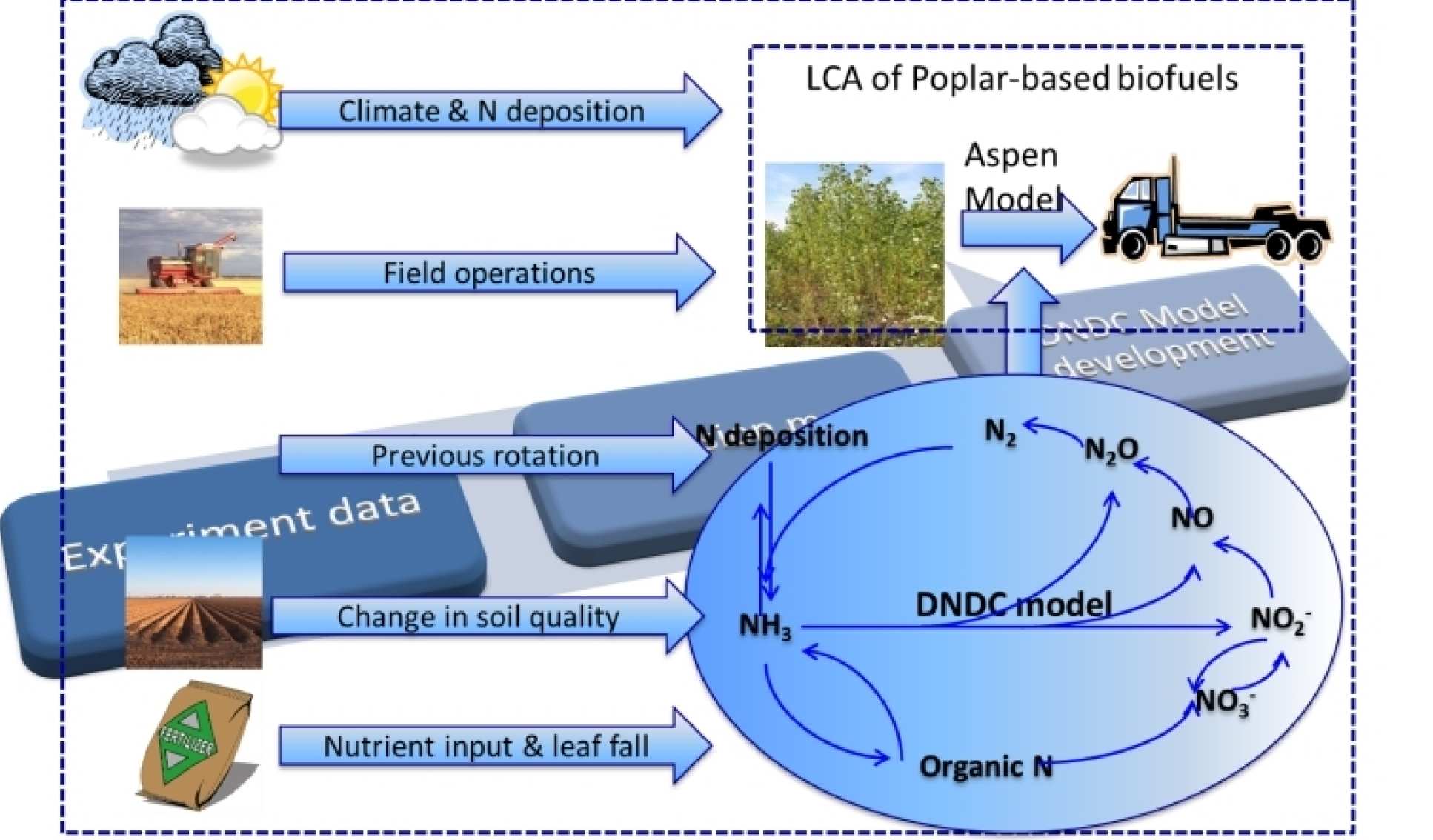In collaboration with the originator of the DNDC (DeNitrification-DeComposition) model at the University of New Hampshire (UNH), we have incorporated the process-based biogeochemical model DNDC into environmental assessment to simulate biomass growth and carbon/nitrogen cycling in agro-ecosystems, and their implications on biorenewable system-wide performances [9, 10]. Particularly, in collaboration with UNH and Italian Agricultural Research Council (CREA), we have done joint research on the DNDC modification and applications to second-generation (2G) perennial bioenergy crops. We used poplar clones grown under different plantation management to validate the newly-modified DNDC model [11]. Several genotypes and genetically lignin-modified poplar grown under short/very short rotation coppiced regimes in different EU regions, and potential EU biofuel supply chains via different processing technologies were modelled, which provided valuable scientific insights, enabling on-going empirical work to be more efficiently focused on key performance-limiting steps[12].
Poster: Environmental viability of bioethanol derived from the poplar clone Imola

Contact us
Miao Guo, Principal Investigator and EPSRC Research Fellow,
Department of Chemical Engineering,
Imperial College London, South Kensington Campus
London
SW7 2AZ
Email: miao.guo@imperial.ac.uk
Telephone: +44 (0) 20 7594 3379